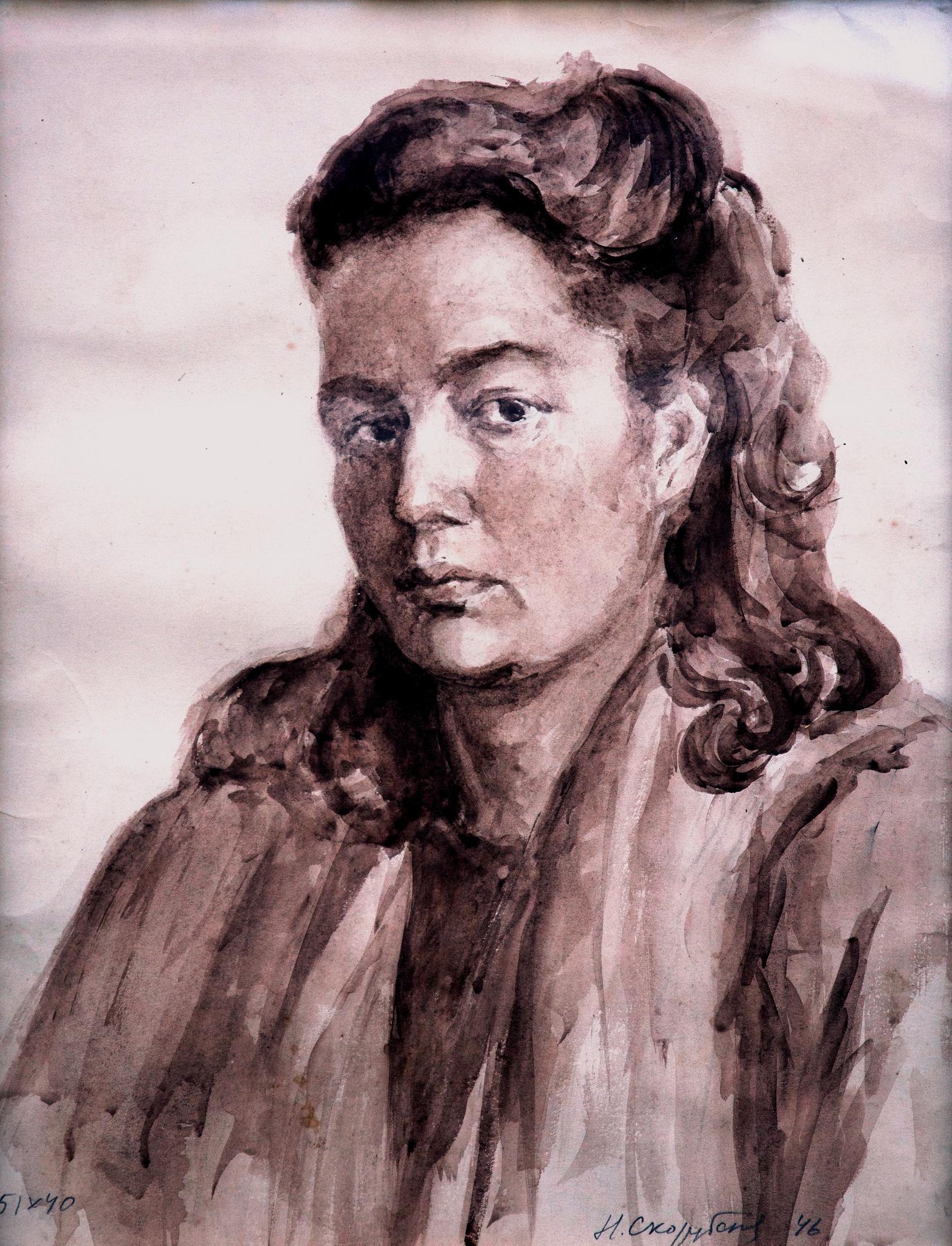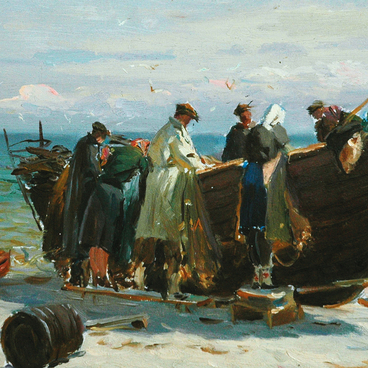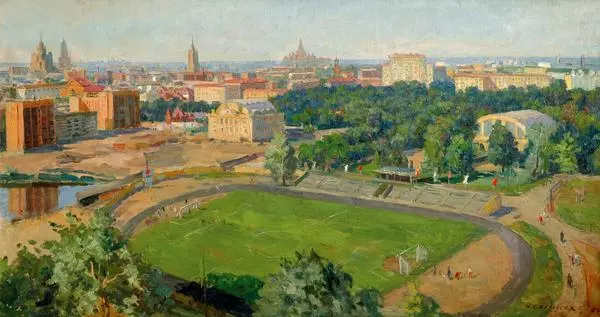Nina Vasilievna Skorubskaya was born in 1918 in the Gomel region of Belarus. In 1938 she matriculated at faculty of art of the Moscow Textile Institute, whence she transferred in 1941 to the porcelain department of the Institute of Decorative and Applied Arts.
The artist’s self-portrait dates from 1946, a year before graduating from the second institute. Skorubskaya was 28 years old at the time. The girl’s gaze in the portrait is focused and serious: not surprising considering how World War Two, which had affected everyone in the country, had just come to an end. During the war years, Skorubskaya had worked as a camouflage artist at the ZIS and Dynamo factories and as a nurse for the evacuation hospital in Biysk.
Although the times were tough, the government was determined to preserve the country’s art schools and many were evacuated to Samarkand, where students could continue their studies. Skorubskaya was one of those evacuees. She began to paint in earnest, especially landscapes, at that time, in 1943, on the advice of the artist Robert Falk, who was teaching in Samarkand.
Skorubskaya’s last work in ceramics was her degree project, the ‘Young Guards’ porcelain dish, produced at the Dulevo factory under the guidance of Alexander Alexandrovich Deineka in 1947. She would never work in ceramics again, becoming engrossed by painting.
Skorubskaya continued to develop her talent as a painter at the Academic Dacha, where she moved with her husband, artist Nikolai Sysoev, in 1948. At that time, she was able to gain a good deal of experience interacting with other artists. She would recall the period thus: ‘My creative growth began to take shape then. I joined the Union of Artists after that, and they gave us a workshop in Maslovka’.
Beginning in 1954, she would be an active participant in republican, regional, and metropolitan exhibitions. Solo exhibitions of Skorubskaya’s work were held in Tver (1982), Lipetsk (2001, 2005), and Moscow (2002). The artist’s works have been preserved in the Tver Art Gallery, the Bryansk Regional Art Museum, and the Lipetsk Regional Art Museum.
The artist’s self-portrait dates from 1946, a year before graduating from the second institute. Skorubskaya was 28 years old at the time. The girl’s gaze in the portrait is focused and serious: not surprising considering how World War Two, which had affected everyone in the country, had just come to an end. During the war years, Skorubskaya had worked as a camouflage artist at the ZIS and Dynamo factories and as a nurse for the evacuation hospital in Biysk.
Although the times were tough, the government was determined to preserve the country’s art schools and many were evacuated to Samarkand, where students could continue their studies. Skorubskaya was one of those evacuees. She began to paint in earnest, especially landscapes, at that time, in 1943, on the advice of the artist Robert Falk, who was teaching in Samarkand.
Skorubskaya’s last work in ceramics was her degree project, the ‘Young Guards’ porcelain dish, produced at the Dulevo factory under the guidance of Alexander Alexandrovich Deineka in 1947. She would never work in ceramics again, becoming engrossed by painting.
Skorubskaya continued to develop her talent as a painter at the Academic Dacha, where she moved with her husband, artist Nikolai Sysoev, in 1948. At that time, she was able to gain a good deal of experience interacting with other artists. She would recall the period thus: ‘My creative growth began to take shape then. I joined the Union of Artists after that, and they gave us a workshop in Maslovka’.
Beginning in 1954, she would be an active participant in republican, regional, and metropolitan exhibitions. Solo exhibitions of Skorubskaya’s work were held in Tver (1982), Lipetsk (2001, 2005), and Moscow (2002). The artist’s works have been preserved in the Tver Art Gallery, the Bryansk Regional Art Museum, and the Lipetsk Regional Art Museum.





